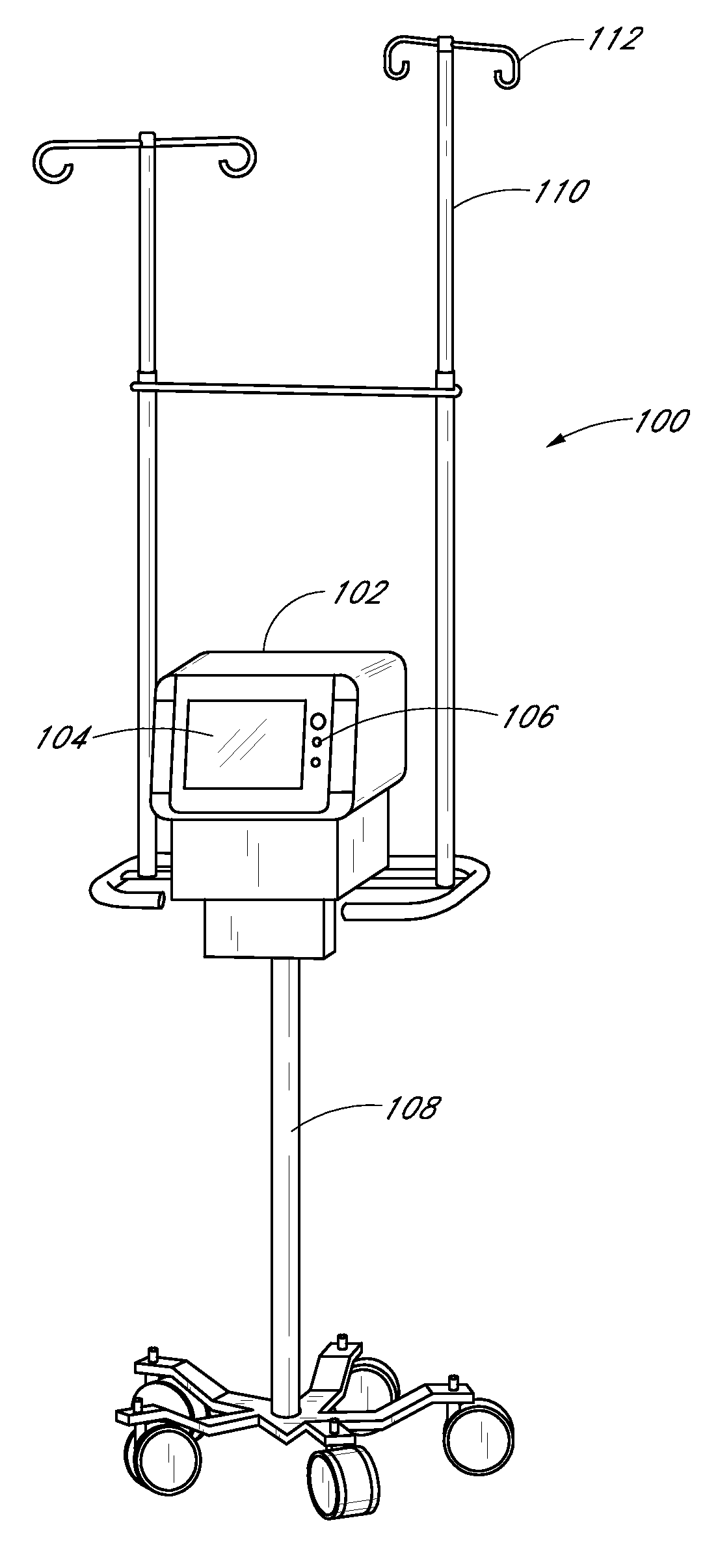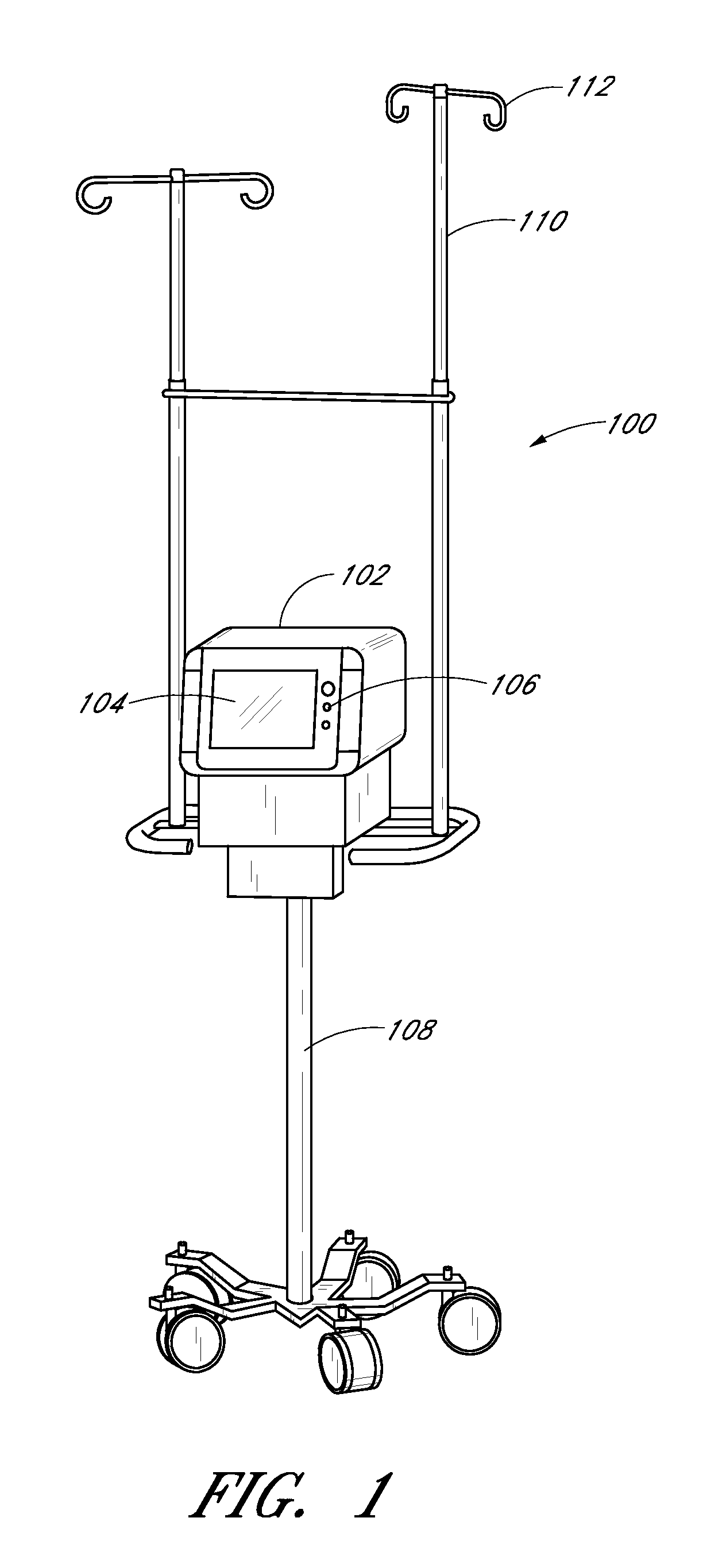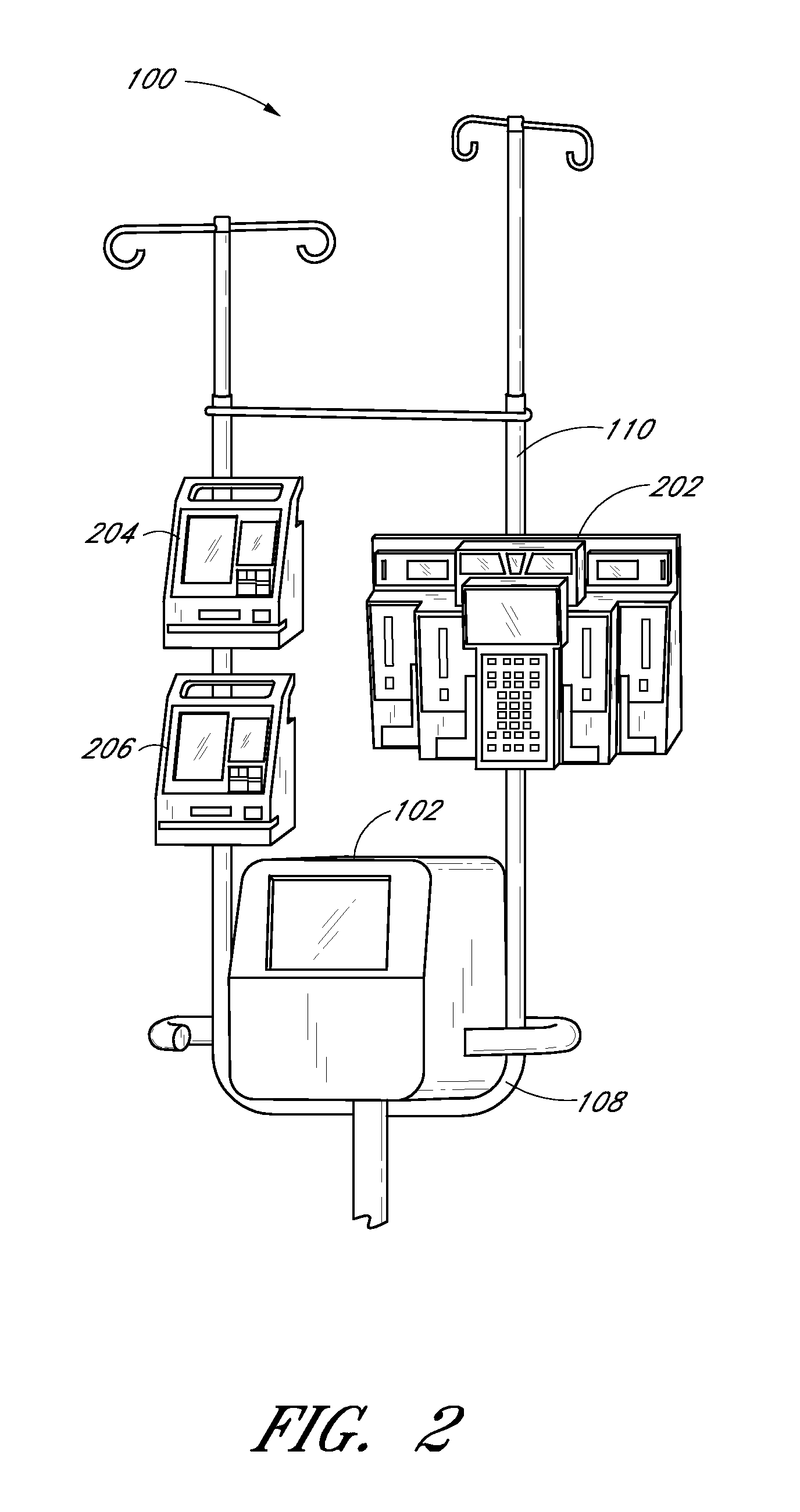Accurate and timely body fluid analysis
a body fluid analysis and accurate technology, applied in the field of accurate and timely body fluid analysis, can solve the problems of affecting the health of patients, affecting the accuracy of body fluid analysis,
- Summary
- Abstract
- Description
- Claims
- Application Information
AI Technical Summary
Benefits of technology
Problems solved by technology
Method used
Image
Examples
example 1
[0218] The sampling system 102 and its components can optionally be embodied as described in the discussion of this Example 1. The sampling system is a reagentless, continuous, point of care analyzer incorporating a Mid Infrared spectroscopic measurement engine and a single patient use centrifugal whole blood separator. Vascular access is made by direct connection to an arterial, central venous or peripheral venous catheter. The instrument automatically makes a plasma glucose measurement every 15 minutes using 40 microliters of whole blood per measurement. When used with a computational algorithm as set forth herein it is very well suited to rejecting the relatively large doses of injectable interferents and wide-ranging endogenous substances commonly found in the critical care setting.
[0219] A study was used to evaluate the baseline accuracy and the performance of Mid IR technology in actual ICU samples.
[0220] The sampling system used in the study includes a pole mounted, point o...
example 2
[0228]FIG. 23 shows a comparison of the results of measurements obtained with the sampling system (“Estimated”) of patients from an ICU at Stamford Hospital in Stamford, Conn. with measurements obtained with laboratory grade analytical equipment (“Reference”) of the Stamford ICU patients. The results show the effectiveness of the Interferent Rejection algorithm described herein on real blood samples, illustrating the standard error for the measurement of glucose, in the presence of interferents, to be 9.75 mg / dL with a spectrometer total integration time of 1 minute.
example 3
Beta Performance Model Predictions
[0229]FIGS. 24, 25, and 26 illustrate the results of calculations showing the trade-off of accuracy and time for a glucose monitoring system. Specifically, FIGS. 24-26 show predictions of the performance of the spectrometer for two important variables, source power and integration time at each filter. The three graphs (labeled Beta900 mW, Beta750 mW, and Beta600 mW) represent three light source power levels (900 mW, 750 mW and 600 mW) for the optical system 1210 (see FIG. 12). The lines on the graphs (labeled Beta, Tint=1; Beta, Tint=2; and Beta, Tint=3, respectively) indicate different integration times for the spectroscopic measurements, and correspond to a total measurement time of 25 seconds, 50 seconds, and 75 seconds, respectively.
[0230] The horizontal axis in each graph of FIGS. 24-26 is standard error in mg / dL, from 2 to 14. The vertical axis has arbitrary units, and is an indicator of the number of samples at each standard error level. Th...
PUM
| Property | Measurement | Unit |
|---|---|---|
| concentration | aaaaa | aaaaa |
| concentration | aaaaa | aaaaa |
Abstract
Description
Claims
Application Information
 Login to View More
Login to View More - R&D
- Intellectual Property
- Life Sciences
- Materials
- Tech Scout
- Unparalleled Data Quality
- Higher Quality Content
- 60% Fewer Hallucinations
Browse by: Latest US Patents, China's latest patents, Technical Efficacy Thesaurus, Application Domain, Technology Topic, Popular Technical Reports.
© 2025 PatSnap. All rights reserved.Legal|Privacy policy|Modern Slavery Act Transparency Statement|Sitemap|About US| Contact US: help@patsnap.com



